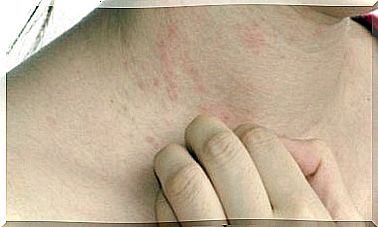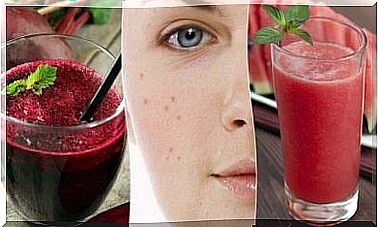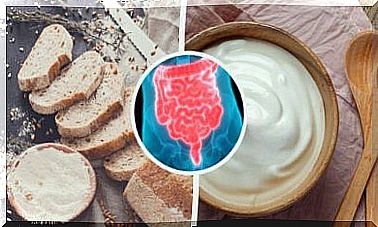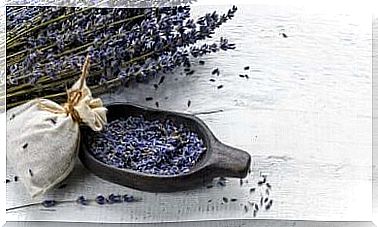Learn To Make Rosemary Soap For Oily Skin
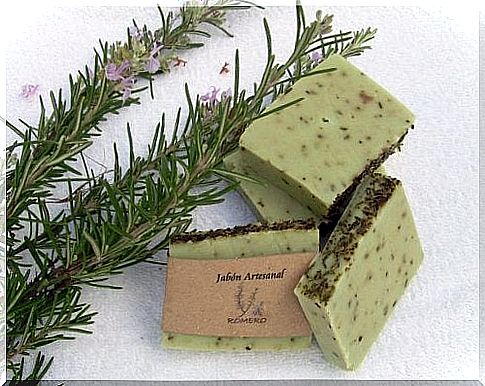
If you like natural beauty products, rosemary soap for oily skin can be one of your best resources. It has firming, anti-inflammatory and antibacterial properties that are ideal for oily skin.
It is easy to make, as long as you do it with the right safety precautions. The steps are very simple, and with a little patience and the ingredients we will share with you, you have a unique beauty product.
Do not forget that rosemary is one of the herbs used by the medical industry to reduce inflammation, irritation and infection.
It will be very useful for your everyday life, both for you and the other members of the family. Here’s how to make it.
Are you ready to follow?
How to make your own rosemary soap for oily skin

When making soap, it is important to remember that you must follow a number of basic safety rules.
You will handle caustic soda. So to prevent it from splashing on your skin or even inhaling the steam, it is a good idea to wear gloves and a mask.
The process itself is not dangerous. But it is always good to be careful, and remember that this technique has been used for generations without any problems.
Let’s find out what you need to make rosemary soap for oily skin.
Ingredients
- 2 cups olive oil (473 g)
- 1 cup dried rosemary (it is important to ensure that any herb you have in your homemade soaps is dried) (150 g)
- 3/4 cup water (150 ml)
- 1/4 cup with caustic soda (62 g)
- 1 cup with rosemary tea (200 ml)
- 1 tbsp essential tea tree oil (15 g)
- A plastic bowl or container
Preparation
The first thing to do is make the tea. It will be very useful because in this way you ensure that your rosemary soap is effective in cleansing and caring for oily skin.
- Bring the water to a boil and add a tablespoon of dried rosemary. Let this simmer for a few minutes, then remove the rosemary and save the liquid.
- The second step is more delicate, but just as simple. You will have caustic soda in a plastic container. Remember to wear gloves and a mask because as you know, this product is corrosive.
- Remember to always work with caustic soda in an open place (a balcony, terrace or garden…) to avoid inhaling steam.
- The next thing you need to do is have the rosemary tea you made in the caustic soda. Do this very slowly to avoid splashing. Note that mixing these two ingredients together will also cause steam.
- Allow the mixture to cool for at least 15 minutes. The mixture should be cool, so that you can gradually add more ingredients.
- When this time has passed, you are ready to have in two cups of olive oil. It should be warm. Pour it very slowly, still use the safety rules.
- Allow this to cool again. Then you should have in essential tea tree oil.
Last step
Remember that it is always good to let the mixture cool so that the essential oils will retain all their properties.
- To speed up the process and get a homogeneous mixture, you will whisk it with a mixer on low speed. Place it in the center of the bowl and do nothing else. Let it mix calmly and gently.
- When you see that the ingredients become thick, like mayonnaise, add the rest of the dried rosemary (to create an exfoliating effect). You’re almost there!
- Finally, you just need to pour this mixture into soap molds. A trick: have a couple of sprigs of rosemary in the molds beforehand to make it easier to take out the soap.
To prevent bubbles from forming, you can give the molds a small tap once you have filled them to get the air out.
Next step? Please be patient. Leave it for six weeks before using it. When the soap is ready, you can use it in your daily beauty ritual.
Rosemary soap for oily skin is also very suitable for infected wounds, inflamed joints, or even to prevent premature aging of the skin.
An aspect that you should not overlook:
